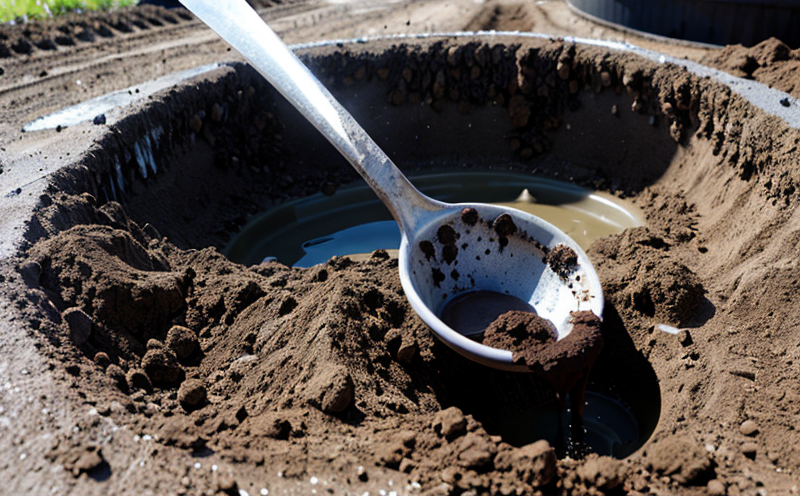ISO 5667-15 Preservation and Handling of Sludge Samples Test
The ISO 5667-15 standard is critical in the water and wastewater testing sector, particularly for sludge and biosolids. This international standard provides a comprehensive approach to preserving and handling sludge samples, ensuring their integrity throughout analysis. Proper sample management is essential as it directly impacts the accuracy of analytical results. Inaccurate or improperly preserved samples can lead to false conclusions regarding the composition, stability, and potential environmental impact of sludge.
Sludge and biosolids are byproducts of wastewater treatment processes and play a crucial role in nutrient recovery, soil improvement, and waste management. The ISO 5667-15 standard ensures that these samples are handled correctly to provide reliable data for compliance with environmental regulations and internal quality standards.
The preservation process described in this standard involves several key steps:
- Sampling: Conducted at the source, ensuring representative samples. This step is critical as it sets the foundation for accurate analysis.
- Transportation: Samples must be transported under controlled conditions to prevent changes in their physical and chemical properties.
- Storage: Once received, samples need to be stored appropriately until they are ready for analysis.
The methodology outlined in ISO 5667-15 ensures that the sludge sample remains stable and representative of its original state. This standard is widely used by laboratories specializing in water and wastewater testing due to its rigorous requirements which minimize the risk of contamination or alteration during handling.
Adhering to this standard enhances the reliability of test results, thereby supporting informed decision-making processes within organizations involved in environmental management and compliance.
Scope and Methodology
The scope of ISO 5667-15 is broad but focuses on the preservation and handling of sludge samples for subsequent analysis. This includes the entire lifecycle from sampling to preparation, ensuring that these procedures are consistent with international best practices.
The standard specifies detailed procedures for:
- Sampling: Recommendations include the use of appropriate tools and techniques to ensure a representative sample is collected.
- Transportation: Guidelines cover temperature control, packaging, and labeling requirements.
- Storage: Instructions are provided on how to store samples at optimal conditions until they are ready for analysis.
The methodology emphasizes the importance of documentation throughout the process. Detailed records must be kept regarding sampling location, time, method used, transport details, storage conditions, and any other relevant information that could affect sample integrity.
By following these procedures, laboratories can ensure their samples meet all necessary criteria for accurate analysis, contributing to more reliable data outputs which are crucial for regulatory compliance and internal quality assurance programs.
Benefits
- Enhanced Sample Integrity: Proper preservation minimizes degradation of the sample, ensuring that analytical results reflect true conditions.
- Improved Compliance: Adherence to international standards like ISO 5667-15 helps organizations meet regulatory requirements and industry expectations.
- Consistent Results: Standardized procedures lead to consistent testing outcomes across different laboratories, enhancing comparability of data.
- Avoidance of Contamination: The outlined precautions reduce the risk of contamination or alteration during sample handling, leading to more accurate results.
Implementing this standard provides significant advantages for organizations involved in water and wastewater management. It not only improves operational efficiency but also enhances reputation through adherence to recognized international standards.
Customer Impact and Satisfaction
- Informed Decision-Making: Reliable data from properly handled samples enables stakeholders to make well-informed decisions about environmental practices, waste management strategies, and compliance initiatives.
- Enhanced Reputation: Meeting international standards like ISO 5667-15 demonstrates a commitment to quality and integrity, thereby enhancing the reputation of the organization.
- Reduced Costs: By avoiding errors due to sample degradation or contamination, organizations can reduce the costs associated with retesting samples or non-compliance penalties.
- Better Stakeholder Relations: Demonstrating adherence to recognized standards fosters positive relationships with regulatory bodies and other stakeholders involved in environmental initiatives.
In summary, implementing ISO 5667-15 preserves sample integrity, supports compliance efforts, ensures consistent testing outcomes, reduces the risk of contamination, and enhances overall operational efficiency. These benefits translate directly into higher customer satisfaction levels as organizations are better equipped to meet their objectives effectively.





